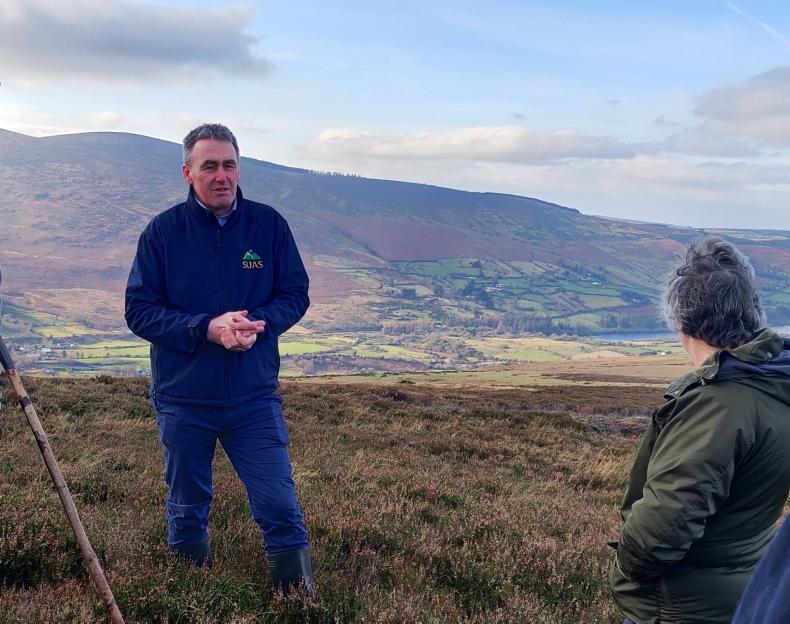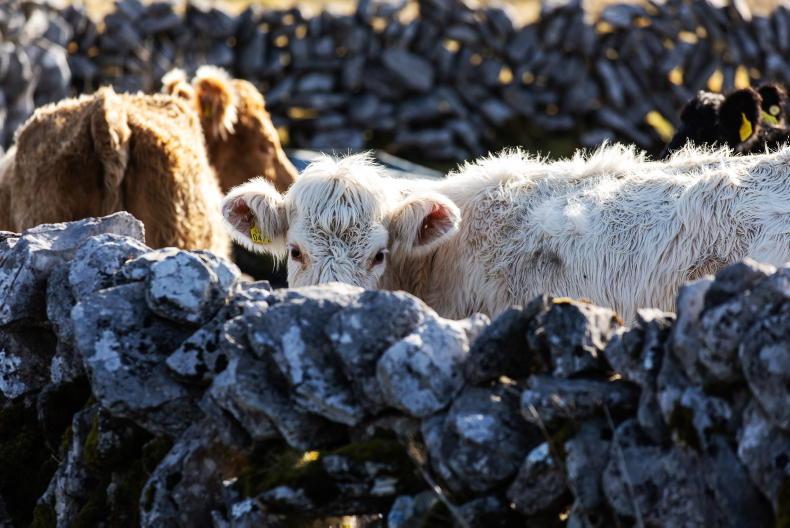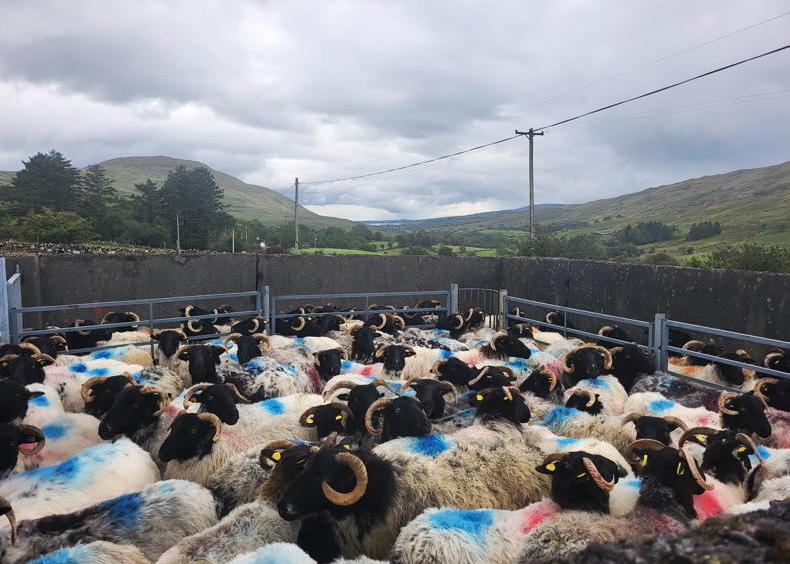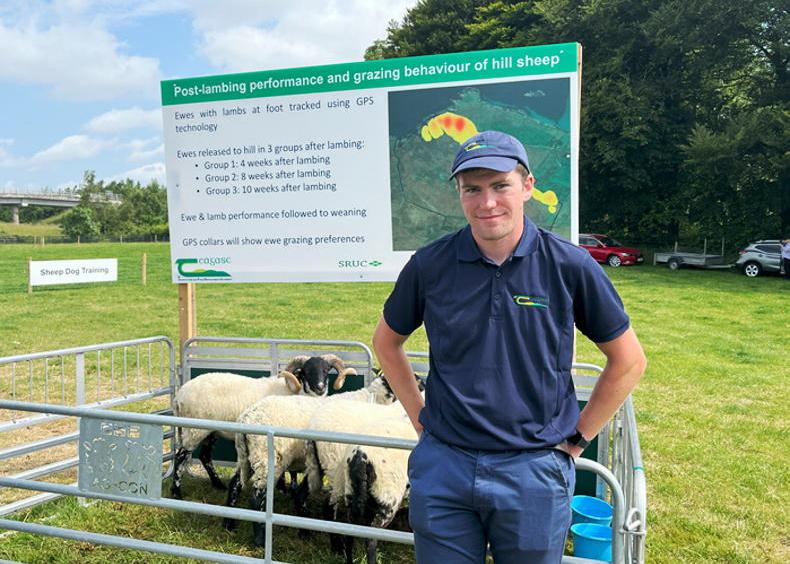The eight co-operation project teams that will manage and assist farmers with the implementation of this aspect of the Agri-Climate Rural Environment Scheme (ACRES) have been selected.
Many of the teams are established groups managing current European Innovation Partnership (EIP) agri projects.
The Department of Agriculture has said on numerous occasions that the learnings from EIP projects will feed in to the co-operation approach of ACRES.
The eight high-priority geographical areas will see a suite of results-based measures introduced along with bespoke farm and landscape options.
Uplands EIP learnings
The information booklet compiled for the recent Teagasc national sheep open day included a section on the EIP-agri projects relevant to uplands areas where hill sheep farming is the dominant practice.
A paper written by Declan Byrne, project manager with the Sustainable Uplands Agri-Environment Scheme (SUAS) in Dublin/Wicklow focused on the learnings to date.
The project, which will runs from 2018 to 2022, was designed to get farmers back grazing and managing the upland areas in a sustainable manner that improves habitat quality, biodiversity value and agricultural productivity.
Declan split the learnings into two groupings – general comments on the learnings and more specific learnings on commonage groupings. His general comments are summarised first.
“Changes in habitat condition occur slowly and responses to measures put in place by farmers may require a 10- to 15-year timeframe. Therefore, providing evidence of habitat improvements may not always be possible within a five- or six-year timeframe.”“The condition of some unfavourable bad habitats may be beyond restoration due to prohibitive costs, lack of practical implementable measures in difficult upland terrains and the long recovery timeframes. These include large-scale rewetting actions, landslide prevention or amelioration, controlling invasive species (including bracken, gorse, etc) and peat erosion.”“Grazing is our most basic management tool in the uplands and was key to the formation of the habitats we have there today. Grazing practices in the Wicklow/ Dublin Mountains have changed over the past 20 to 30 years to a system that in many areas is not delivering the management required for the maintenance of the habitats we are trying to protect.” 
Farmers and shareholders of Granamore commonage attending a SUAS field meeting in 2019.
There is a need for research and a targeted advisory service for farmers to include advice on how to actually manage habitats to improve their condition and also optimum management of livestock in different habitats.
“There is a diverse range of ownership types in our uplands, ranging from private ownership to leasing, grazing rights, collops, grazing licences and common ownership. Average LPIS plot size is large with some sites over 1,000ha.” “The importance of engaging with relevant agencies (eg National Parks and Wildlife Service), experts and other community groups.”“Burning is a major issue in the Wicklow and Dublin Mountains. Most of this burning has been uncontrolled and during the restricted period. SUAS has been supporting farmers in promoting the concept of prescribed burning, ie controlled burning as part of a habitat management plan, with appropriate aftercare and developing towards sustainable management practices. Wildfires are still a problem.” “Recognition that we do not have all the answers to the challenges of halting and reversing biodiversity loss, enhancing ecosystem services and preserving habitats and landscapes.”“Where habitat scores are low, there needs to be a minimum payment for farmers to encourage participation. Some of these sites contain deep peat in danger of erosion and should be priority areas for management, but unless there are sufficient farmer payments, these areas will not engage with the scheme.” “Farmers need to have an idea of their potential habitat scores/income before engaging a planner to develop a management plan, because if payments are very low, they may decide not to participate at all.”“We also note some very good habitats of national importance are excluded as they are not Natura sites, and it is not clarified yet if non-SAC commonages will be included or not.”A significant barrier in the past to achieving progress in a particular commonage area has been a lack of cohesion between shareholders. This is often triggered due to shareholders falling out with one another.
Declan Byrne says that the SUAS project trialled the formation of commonage groups to bring shareholders together to implement measures to good effect.

SUAS project manager Declan Byrne explains the importance of controlled burning to farmers in Glenasmole, Co Dublin \ Barry Cassidy
He says that the success of commonage groups depends on allowing adequate time and support for group formation.
While the ACRES co-operation projects will not be confined to commonage, it will require farmers involved to work together on specific objectives.
It is viewed that participation at the outset between farmers and relevant stakeholders such as ecologists, hydrologists, ornithologists, environmental scientists, field officers and farm advisers in the initial and ongoing assessment of the upland habitats and biodiversity is crucial.
Furthermore, Declan outlines that training programmes, including site visits, are essential to building the capacities of farmers and shareholders to manage the upland challenges.
A learning and understanding of the objectives for each specific habitat and the measures required to deliver this goal is paramount and training should be completed before plans are developed and agreed upon. An important aspect includes compensating farmers and shareholders for time invested in training.
The eight co-operation project teams that will manage and assist farmers with the implementation of this aspect of the Agri-Climate Rural Environment Scheme (ACRES) have been selected.
Many of the teams are established groups managing current European Innovation Partnership (EIP) agri projects.
The Department of Agriculture has said on numerous occasions that the learnings from EIP projects will feed in to the co-operation approach of ACRES.
The eight high-priority geographical areas will see a suite of results-based measures introduced along with bespoke farm and landscape options.
Uplands EIP learnings
The information booklet compiled for the recent Teagasc national sheep open day included a section on the EIP-agri projects relevant to uplands areas where hill sheep farming is the dominant practice.
A paper written by Declan Byrne, project manager with the Sustainable Uplands Agri-Environment Scheme (SUAS) in Dublin/Wicklow focused on the learnings to date.
The project, which will runs from 2018 to 2022, was designed to get farmers back grazing and managing the upland areas in a sustainable manner that improves habitat quality, biodiversity value and agricultural productivity.
Declan split the learnings into two groupings – general comments on the learnings and more specific learnings on commonage groupings. His general comments are summarised first.
“Changes in habitat condition occur slowly and responses to measures put in place by farmers may require a 10- to 15-year timeframe. Therefore, providing evidence of habitat improvements may not always be possible within a five- or six-year timeframe.”“The condition of some unfavourable bad habitats may be beyond restoration due to prohibitive costs, lack of practical implementable measures in difficult upland terrains and the long recovery timeframes. These include large-scale rewetting actions, landslide prevention or amelioration, controlling invasive species (including bracken, gorse, etc) and peat erosion.”“Grazing is our most basic management tool in the uplands and was key to the formation of the habitats we have there today. Grazing practices in the Wicklow/ Dublin Mountains have changed over the past 20 to 30 years to a system that in many areas is not delivering the management required for the maintenance of the habitats we are trying to protect.” 
Farmers and shareholders of Granamore commonage attending a SUAS field meeting in 2019.
There is a need for research and a targeted advisory service for farmers to include advice on how to actually manage habitats to improve their condition and also optimum management of livestock in different habitats.
“There is a diverse range of ownership types in our uplands, ranging from private ownership to leasing, grazing rights, collops, grazing licences and common ownership. Average LPIS plot size is large with some sites over 1,000ha.” “The importance of engaging with relevant agencies (eg National Parks and Wildlife Service), experts and other community groups.”“Burning is a major issue in the Wicklow and Dublin Mountains. Most of this burning has been uncontrolled and during the restricted period. SUAS has been supporting farmers in promoting the concept of prescribed burning, ie controlled burning as part of a habitat management plan, with appropriate aftercare and developing towards sustainable management practices. Wildfires are still a problem.” “Recognition that we do not have all the answers to the challenges of halting and reversing biodiversity loss, enhancing ecosystem services and preserving habitats and landscapes.”“Where habitat scores are low, there needs to be a minimum payment for farmers to encourage participation. Some of these sites contain deep peat in danger of erosion and should be priority areas for management, but unless there are sufficient farmer payments, these areas will not engage with the scheme.” “Farmers need to have an idea of their potential habitat scores/income before engaging a planner to develop a management plan, because if payments are very low, they may decide not to participate at all.”“We also note some very good habitats of national importance are excluded as they are not Natura sites, and it is not clarified yet if non-SAC commonages will be included or not.”A significant barrier in the past to achieving progress in a particular commonage area has been a lack of cohesion between shareholders. This is often triggered due to shareholders falling out with one another.
Declan Byrne says that the SUAS project trialled the formation of commonage groups to bring shareholders together to implement measures to good effect.

SUAS project manager Declan Byrne explains the importance of controlled burning to farmers in Glenasmole, Co Dublin \ Barry Cassidy
He says that the success of commonage groups depends on allowing adequate time and support for group formation.
While the ACRES co-operation projects will not be confined to commonage, it will require farmers involved to work together on specific objectives.
It is viewed that participation at the outset between farmers and relevant stakeholders such as ecologists, hydrologists, ornithologists, environmental scientists, field officers and farm advisers in the initial and ongoing assessment of the upland habitats and biodiversity is crucial.
Furthermore, Declan outlines that training programmes, including site visits, are essential to building the capacities of farmers and shareholders to manage the upland challenges.
A learning and understanding of the objectives for each specific habitat and the measures required to deliver this goal is paramount and training should be completed before plans are developed and agreed upon. An important aspect includes compensating farmers and shareholders for time invested in training.












SHARING OPTIONS